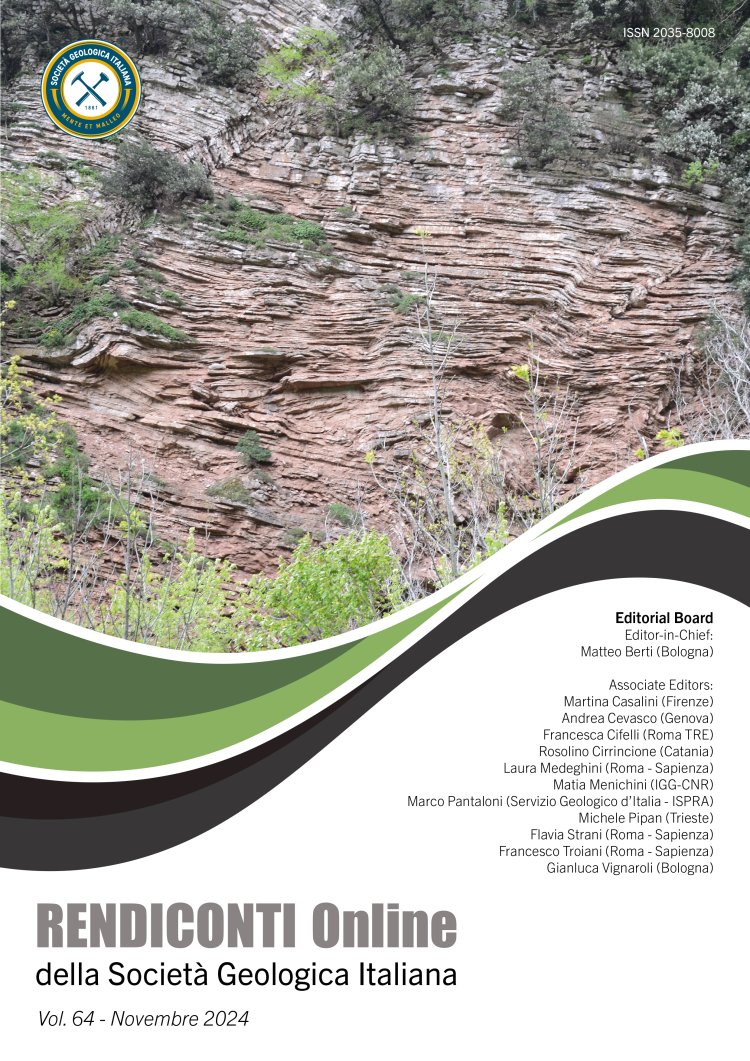
The Toarcian stage in key outcrops of the Umbria-Marche (Northern Apennines, N Italy) and Longobucco (Sila Greca, S Italy) Basins: ammonite biostratigraphy, sedimentology and paleoenvironmental considerations
Marco Lesti1, Marco Romano2, Nino Mariotti2 & Simone Fabbi2
1Petrambiente SPT, Rome, Italy.
2ipartimento di Scienze della Terra, Sapienza Università di Roma, Rome, Italy.
Corresponding author e-mail: simone.fabbi@uniroma1.it
Volume: 64/2024
Pages: 54-78
Abstract
This study investigates seven stratigraphic sections within the Umbria-Marche and Longobucco Basins, with a primary focus on the biostratigraphy and sedimentology of the Toarcian stage. Biostratigraphic correlation was conducted using the standard Tethyan and Mediterranean ammonite biozonations, revealing fully comparable faunal assemblages across the analyzed stratigraphic sections.
In the Umbria Marche Domain, the Emaciatum Zone of the upper Pliensbachian occurs within pelagic limestone of the Corniola, and occasionally into the marly/clayey facies of the Marne di Monte Serrone. Conversely, the Emaciatum Zone at Caloveto is in a shallow-water carbonate facies. The passage from the Emaciatum to the Polymorphum Zone falls within a transitional formation boundary when it occurs between the Corniola and Marne di Monte Serrone, while it is abrupt and often marked by a hard-ground between the Corniola and Rosso Ammonitico. At Caloveto, the Pliensbachian-Toarcian boundary is marked by a hiatus extending to at least the Polymorphum Zone, while the Serpentinum Zone, is documented in the literature. Above the Polymorphum Zone, the T-OAE occurs as a black shale horizon or, in its absence, is distinguished by a marked faunal turnover passing in the Serpentinum Zone. The Bifrons Zone occurs within nodular marly limestones, exhibiting an upward increase in CaCO3 content. Notably, the Marne di Monte Serrone are often heteropic with the Rosso Ammonitico in the lower Toarcian.
Sedimentation becomes increasingly calcareous at the Toarcian/Aalenian boundary, coinciding with the first appearance of chert.
Keywords
Get Full Text